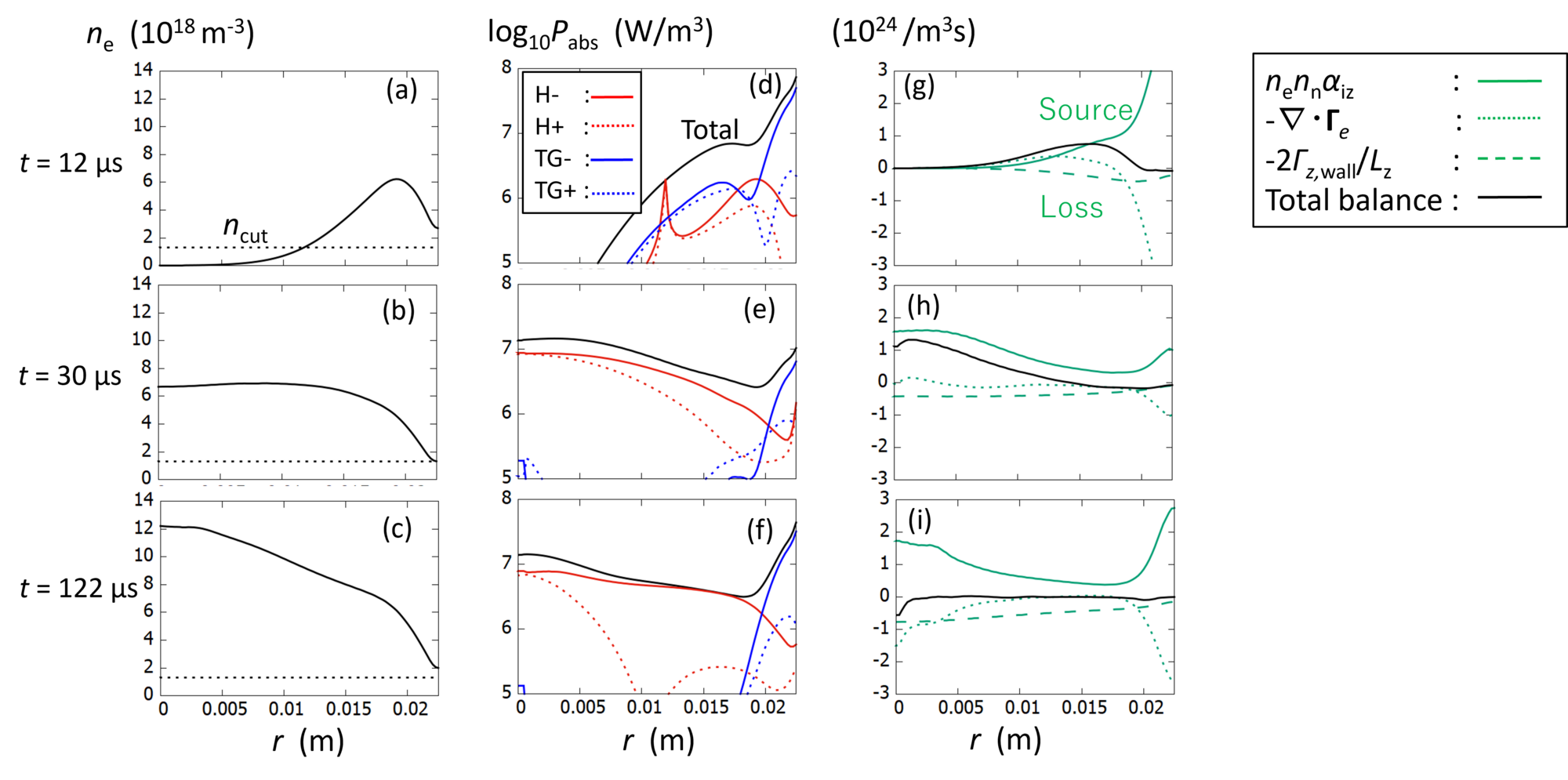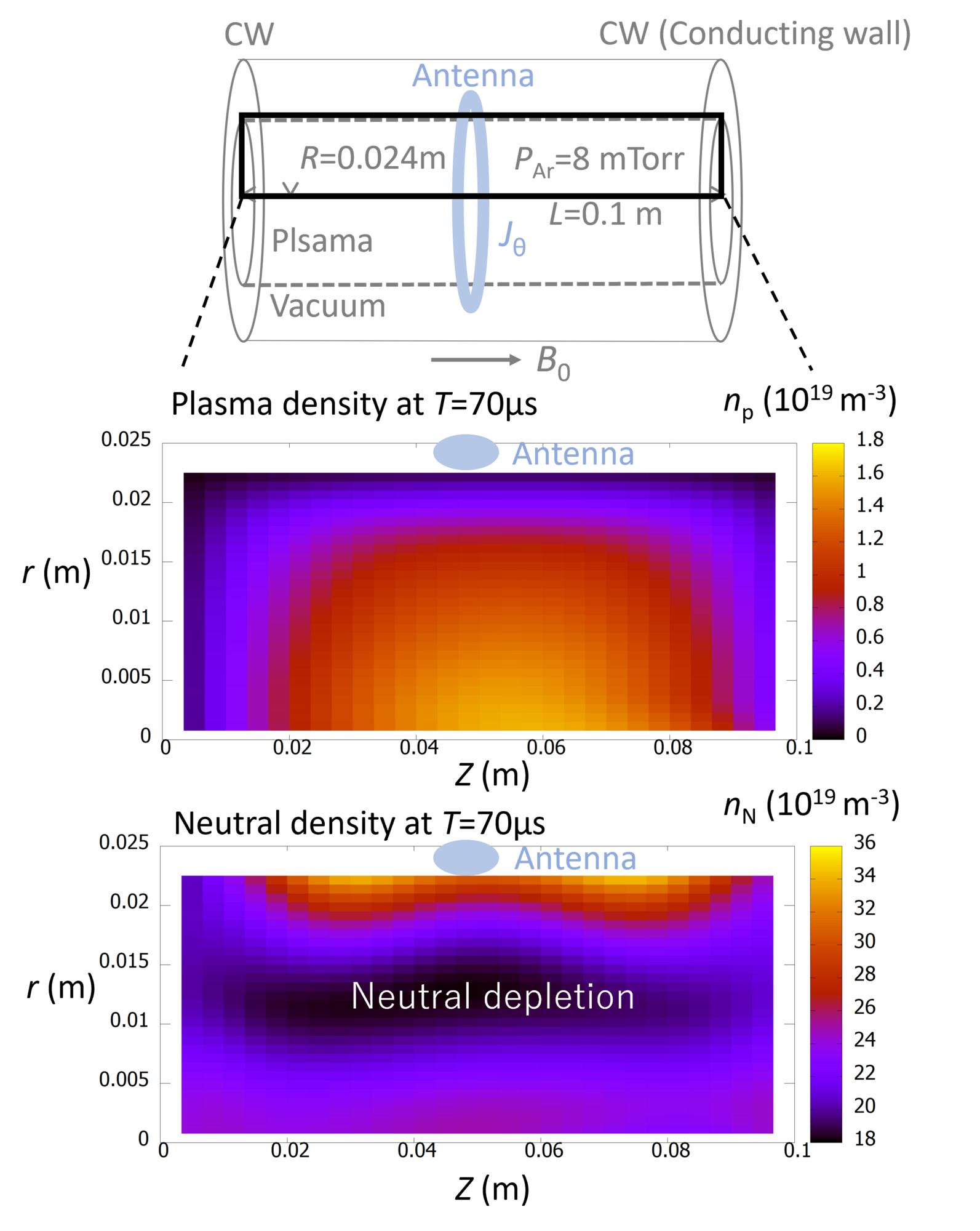Research
High-density radiofrequency plasma

There are various radio-frequency plasma sources depending on their production mechanisms. Since helicon plasma is highest density source which can produce one or two order higher density than other sources, it is expected to be applied for the high-power next generation electric thruster. We are investigating the production mechanism of helicon plasma by fluid simulation and intend to develop more high density plasma source. We are also doing experiment of helicon plasma production in Chubu University.
Production mechanism of helicon plasma
In helicon discharge, efficient heating of electrons by waves excited in a magnetized plasma promotes ionization of background neutrals. In experiment, high density of 10^19 [m^-3] plasma can be generated relatively easily, therefore helicon plasma is expected be applied for various applications. On the other hand, the further understanding of the mechanism of plasma heating by the waves is necessary to supersede current plasma sources. We have been investigating the spatio-temporal behavior of helicon discharge by fluid simulation. Up to now, we have clarified the temporal variation of heating structure and plasma profiles before the steady state, and the mechanism of transition to high-density mode.

Neutral depletion process
In a radiofrequency plasma, the plasma density tends to saturate as the input power increases. This density limit is considered to be determined by the depletion of ionization source of neutrals. Therefore, it is essential to clarify the process of neutral depletion to develop more high density source. We have been investigating the temporal behavior of the neutral depletion by using the model including neutral dynamics.

Neutral depletion occurs at 0.005 m<r<0.015 m.